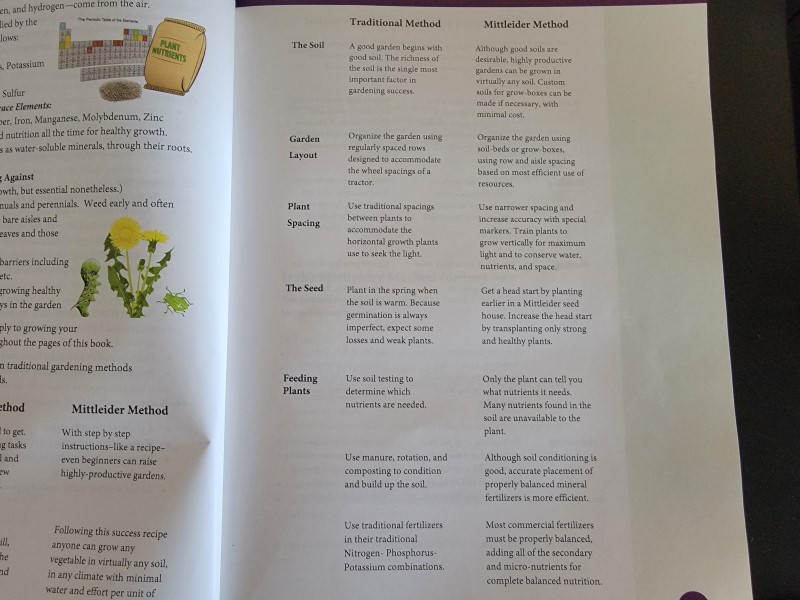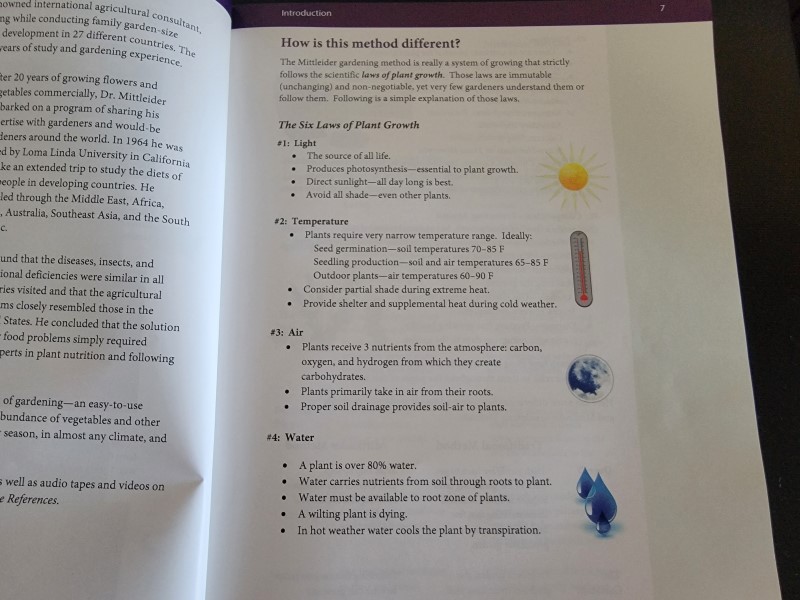I’ve never been much of a gardener. I prefer to stockpile food the easy way–I buy it. But that plan is getting more and more expensive. Plus, it doesn’t work well for the most nutritious foods, such as vegetables. Unless I choose to purchase the food already freeze-dried, it’s really hard to stockpile all of the vegetables we’d like to have. But that’s silly because I have my own freeze-dryer; I just need copious amounts of vegetables and a rekindled desire to dust off the freeze dryer.
And if I’m being perfectly honest, I’ve always left a majority of the gardening tasks to my father-in-law, who lives with us. But because we’re always trying to do things more efficiently around here, at least that’s what my wife keeps telling me, we’re going to take a new approach to our vegetable garden this year. Enter The Mittleider Gardening Course book.
Long story short, about a month ago, a friend of my mother-in-law’s suggested we give vertical gardening a shot. Apparently, it’s what she does and they love it. The Mittleider method is essentially vertical gardening on steroids. Thus, if you’re short on space, or if you simply want much greater yields this year, you might give it a go.
Granted, I can’t yet speak from experience, but I’m excited to give it a try. Normally, I don’t like reading anymore. I rarely take notes. And I really don’t like trying new things. But this book is changing my mind on all accounts.
Overall, it’s an easy read. The book starts out by explaining what The Mittleider method is, and how it differs from traditional gardening. I found the differences startling. Here’s one of three pages explaining the many differences:

Sadly, it seems like we’ve been doing absolutely everything wrong with our gardening techniques, lol.
But the author also takes the time to explain why, in their opinion and experience, the Mittleider method is superior to traditional gardening practices. Each topic is laid out in lesson format, discussing a variety of crucial topics, including soil bed (and grow box) preparation, planting, watering, fertilizing, weeding, harvesting, and plenty more.
I noticed some redundancy when the book talks about grow boxes right after discussing soil-beds, but it’s all good information to rehash, anyway. Later, the book discusses how to care for climbing plants, automated watering, cold-weather gardening, and even greenhouse construction.
Near the end, the author also dives into how to fix problems you’ll undoubtedly encounter, such as nutritional deficiencies, destructive insects, plant diseases, soil amendments, and more.
Like I said, the book is an easy read and explains core concepts so that even I can understand them. For example, the beginning of the book starts by explaining the “six laws of plant growth.” These are the first four:

There are plenty of references throughout, appendices for planning and keeping track of everything (which I’ve yet to dive into), and plenty more that I still need explore. Like I said above, The Mittledier Gardening Course book is changing my mind on how I should be gardening henceforth, and I hope it will for you, too.
Now, I just need to get my father-in-law to read it and, more importantly, hope the book adjusts decades of an old man doing things the only way he knows how.
If you have any experience with such techniques, I’d be grateful to hear of your experiences.

Leave a Reply